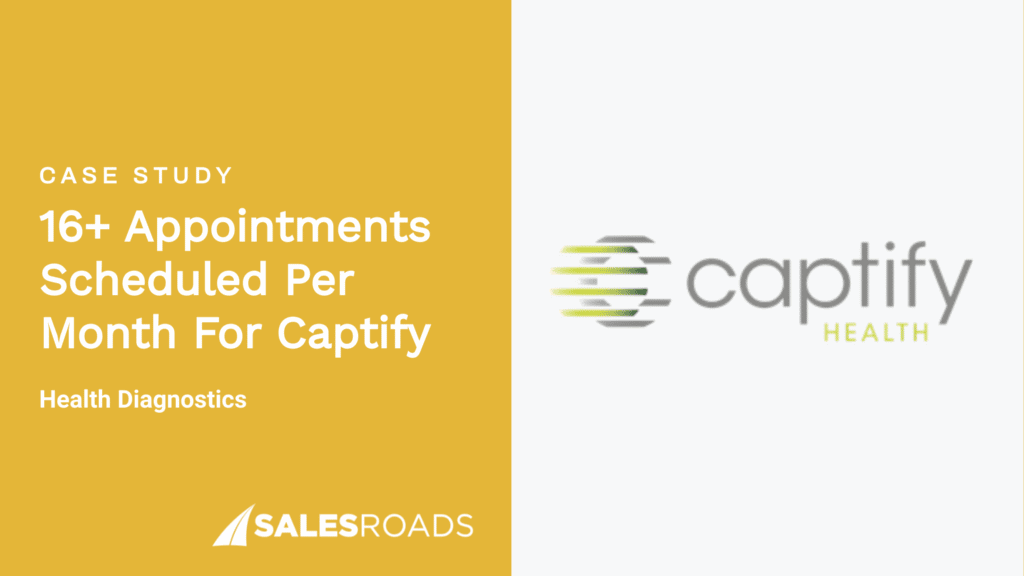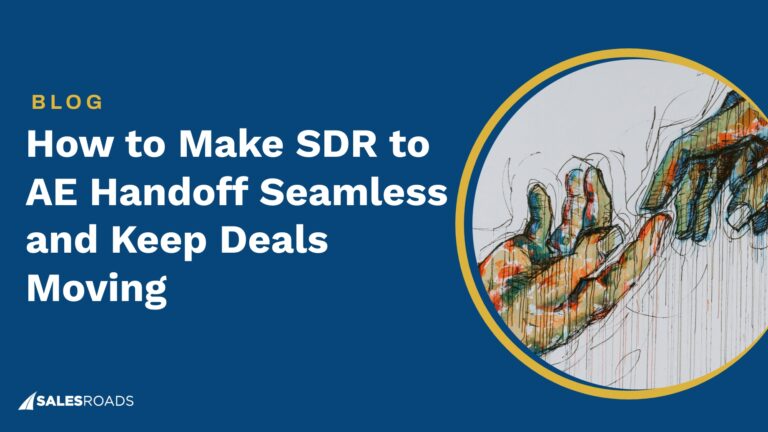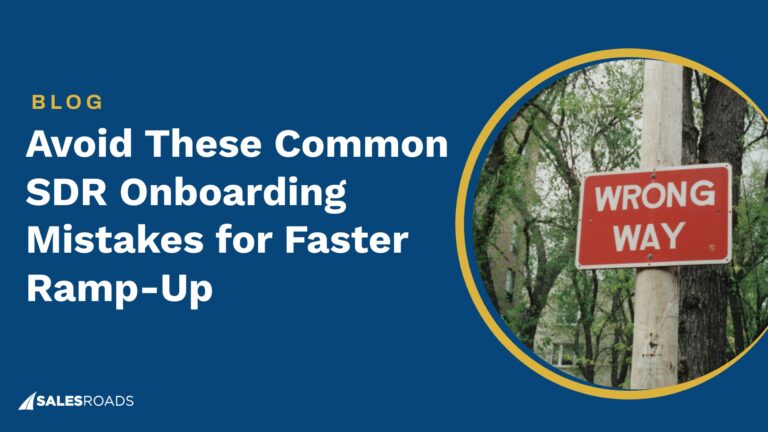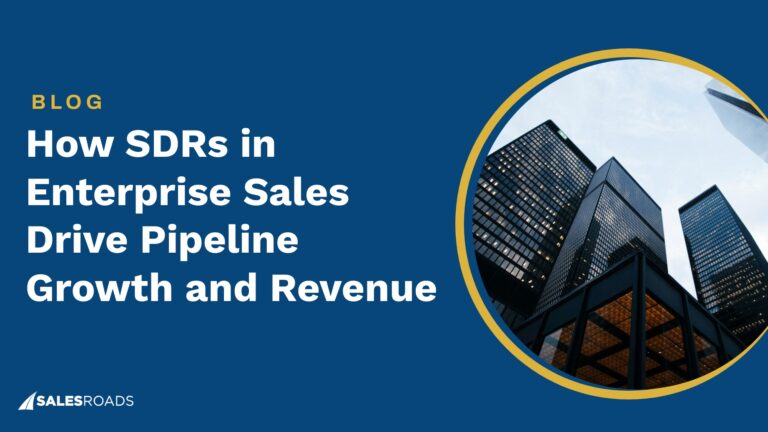Staring at your budget, thinking that bringing SDRs in-house gives you more control over your pipeline. On paper, it makes perfect sense. You get to build your culture, maintain direct oversight, and theoretically create a well-oiled prospecting machine.
But here’s the thing: most sales leaders drastically underestimate what managing SDRs in-house actually costs. Sure, you see the salary line items and think you’ve got it covered.
But the hidden expenses pile up fast, and they pile up in ways that can blindside even the most experienced revenue teams.
The reality is that what looks like an investment in control and culture often turns into a budget-busting exercise in managing complexity. Between turnover costs, sales tech stack overhead, and the constant drain on management bandwidth, in-house SDR costs spiral quickly and unpredictably.
The Direct Hiring Costs You See on Paper
Let’s start with the obvious costs that everyone budgets for but that still manage to exceed expectations more often than not.
Salaries, commissions, and benefits
The baseline numbers look reasonable enough.
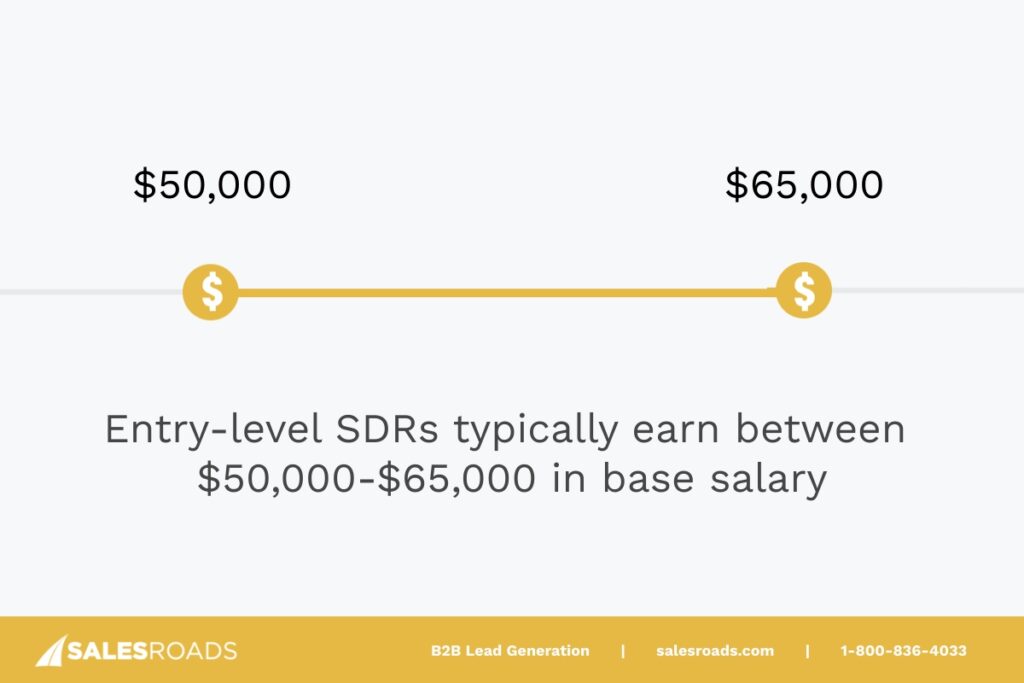
Entry-level SDRs typically earn between $50,000-$65,000 in base salary, which seems manageable when you’re planning your headcount. But that’s just the starting point.
On average, an SDR’s base salary represents about 64% of their total compensation, with the remaining 36% coming from commission and bonuses. So you’re actually looking at closer to $85,000 in total compensation when they’re hitting their numbers.
Then there are the benefits that often get underestimated in initial budgets: health insurance, dental, vision, 401k matching, PTO, payroll taxes, and workers’ compensation.
These typically add another 25-30% on top of base salary. Suddenly, your $55,000 SDR is costing you well over $100,000 annually when they’re performing.
Recruiting fees and hiring delays
Here’s where things get expensive fast.
According to SHRM, the average cost of hiring a new employee is around $4,129, but that’s just the baseline. But the real killer is time-to-fill.
Every week a territory sits empty is lost pipeline opportunity. If your SDR was supposed to generate 15 qualified leads per month, and it takes you two months to replace them, that’s 30 leads that never materialized.
Depending on your conversion rates and deal size, that delay could cost you tens of thousands in lost revenue.
And let’s not forget the ramp-up gap. New SDRs typically take 3-6 months to get up to full productivity.
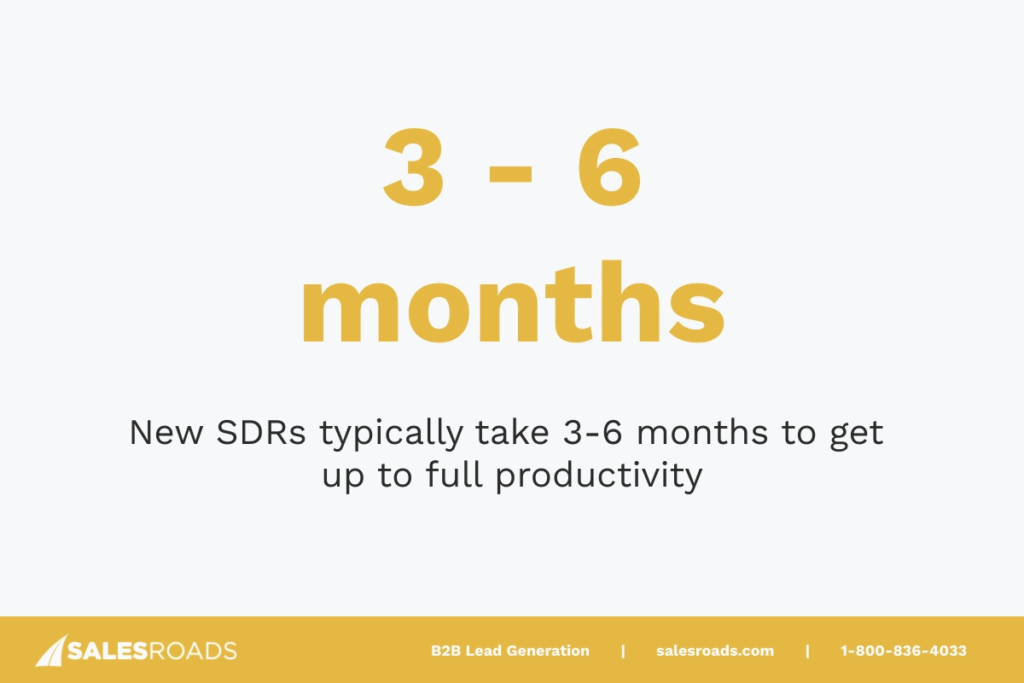
During that time, you’re paying full salary and benefits while getting minimal pipeline contribution.
The Operational Overhead That Compounds Over Time
The salary and benefits are just the tip of the iceberg. The real budget-killer is all the operational overhead that compounds month after month.
Sales ops, administrative duties, and management bandwidth
Your sales managers didn’t sign up to become SDR babysitters, but that’s often what happens. Between weekly 1:1s, performance monitoring, territory planning, and reporting, many SDR managers devote around 12–15% of their time to coaching and skill development.
If your sales manager makes $150,000 annually, 10 hours per week per SDR represent about $1,500 per month in opportunity cost. Multiply that across a team of 5 SDRs, and you’re looking at $7,500 monthly or $90,000 annually in management bandwidth that’s not focused on closing deals or strategic initiatives.
Sales operations support adds another layer of expense. Someone needs to manage territories, update lead routing, maintain data hygiene and maintain processes. For every 5-7 SDRs, you typically need dedicated sales ops support, which means another $143,422 salary to factor in as of August 2025.
Time lost to onboarding, training, and supervision
SDR onboarding isn’t a “set it and forget it” process. New hires need weeks of intensive training before they even touch a prospect, and then weeks of close supervision before they’re truly autonomous.
During those first four weeks, you’re paying full salary while getting zero pipeline contribution. But it’s not just the SDR’s time; someone has to deliver that training.
Continuous coaching is essential too. HubSpot reports that average sales rep turnover is 35%, which is significantly higher than the 13% average across all industries. In high-churn SDR roles, you’re constantly cycling through training and supervision with new team members.
High turnover and replacement cycles
Speaking of churn, this is where in-house SDR costs really spiral out of control. Data shows that almost half (45%) of B2B sales orgs have average turnover rates above 30%.
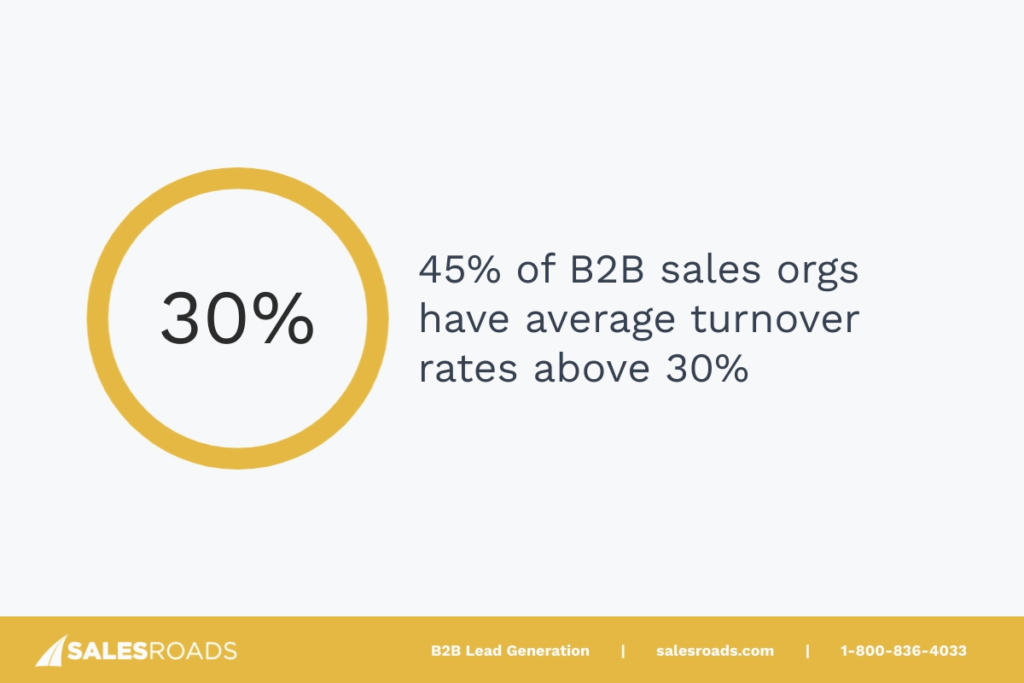
For SDRs specifically, the numbers are often even higher.
Every time an SDR leaves, you’re back to square one: recruiting fees, hiring delays, sdr onboarding time, and 3-6 months of reduced productivity while the replacement ramps up. If you have a standard 34% turnover rate and each SDR has a million-dollar quota impact, the annual cost to replace sales reps can reach into the millions.
The cycle becomes exhausting and expensive. Just when your team hits its stride, someone gives notice, and you’re back to managing the replacement process.
The Technology Burden: Your Sales Stack Isn’t Cheap
Even lean SDR teams need expensive software to function effectively, and most sales leaders underestimate just how quickly these tool costs add up.
CRM systems, engagement platforms, and forecasting tools
All the tools you need to run an SDR team come with recurring costs that only escalate as your team scales.
For example, for CRM, you need to pay around:
- Small businesses typically pay $10–$30 per user per month.
- Medium-sized teams often pay $60–$100 per user per month.
- Large enterprises may spend anywhere from $150 up to $1,000+ per month, often bundled for multiple users.
And CRM is only one piece of the stack. You’ll also need to budget for engagement platforms, dialers, data providers, and deliverability tools.
As your SDR team grows, these subscriptions don’t stay flat; they multiply. Licenses scale, more seats are added, setups and integrations become more complex, and you keep paying.
Cost of integrating, managing, and maintaining multiple sales tools
The software licenses are just the beginning. Someone needs to set up integrations, manage user permissions, handle renewals, train people on new features, and maintain data hygiene across platforms.
Most companies underestimate the IT and admin overhead required to keep a complex sales stack running smoothly. You’ll need either dedicated sales ops resources or IT support, which adds another layer of cost.
Plus, there’s inevitable feature overlap between tools. You might be paying for email tracking in three different platforms, or duplicate contact management features across your CRM and data provider.
The Risk of Underutilization
Here’s a frustrating reality: many sales tools are only partially utilized. Companies pay for comprehensive platforms but their SDRs only use a small partion of available features.
You might be paying $200/month per seat for a sophisticated engagement platform, but if your SDRs only use it for email sequences and basic reporting, you’re essentially overpaying for functionality that never gets adopted.
And it’s not just the cost of licenses that eats into your budget; it’s how little many of those tools actually get used. Jake Dunlap, a guest David Kreiger welcomed on the Sell Like A Leader podcast, shared a story about talking with a sales leader who admitted their team was juggling a 23-tool stack.
Most of those platforms had been purchased because they were hyped up in the market, not because they fit the team’s workflow.
As Jake pointed out in the episode, underutilization is only half the problem. Buying tools for hype rather than for function drives unnecessary costs and complexity.
If you want to hear what Jake recommends sales leaders consider before purchasing new sales tools and the AI-driven functions he thinks are worth prioritizing, you can listen to the full episode here:
Outsourced SDR Teams as a Cost-Control Strategy
Instead of carrying unpredictable costs tied to recruiting, turnover, and expanding tech stacks, outsourced SDR teams provide a cost structure that’s stable and transparent.
With predictable pricing, built-in expertise, and the ability to scale up or down as business needs change, outsourcing helps companies control costs without sacrificing performance. You’re not replacing quality with convenience; you’re gaining a partner that’s already trained, tooled, and ready to generate results.
Predictable Pricing with Scalable Delivery
The best outsourced SDR companies work on a retainer model. You know exactly what you’re paying, and there are no surprise costs from turnover, hiring delays, or additional benefits.
If you need to scale up for a product launch, your outsourced partner can add resources without the 3-6 month hiring and onboarding cycle. And if you need to scale down after a budget cut, you’re not stuck with overhead and severance costs.
This predictability makes budgeting and sales forecasting infinitely easier. No more surprises when your top SDR gives notice right before the end of the quarter.
Lower Tech Stack Burden and Faster Execution
Outsourced teams bring their own technology stack, which means no additional licensing costs on your end. They’ve already invested in the tools, integrations, and training needed to execute effectively.
More importantly, they can start executing immediately. While you’d spend weeks setting up territories and onboarding new hires, an outsourced team can be generating pipeline within days.
The speed-to-value difference is significant. Instead of months of ramp-up time at full cost with minimal output, you get immediate execution from an experienced team.
How to Evaluate the Real Cost of Your SDR Strategy
Before you make any decisions about in-house versus outsourced SDRs, you need to do an honest accounting of all your costs.
Build a Full Cost Breakdown: Time, Tools, and Team
Start by listing every expense associated with your SDR function:
| Direct costs | – Base salaries and commission payments – Benefits, taxes, and insurance – Recruiting fees and hiring costs – Sales tech stack (all tools, not just the obvious ones) |
| Hidden costs | – Management time spent on SDR oversight – Sales ops support and administration – Onboarding and training time (both SDR and trainer hours) – Lost productivity during ramp-up periods – Turnover and replacement costs |
| Opportunity costs | – Pipeline gaps during hiring delays – Management bandwidth not focused on strategic initiatives – Underutilized software features and overlapping tools |
Most sales leaders are shocked when they see the full picture.
Compare In-House vs Outsourced ROI Over 6–12 Months
The true cost difference becomes most apparent when you evaluate over time. Hidden costs compound, and the impact of turnover becomes more visible over longer periods.
Create a side-by-side analysis that includes:
- Total cost per qualified lead generated
- Time to full productivity (and cost during ramp-up)
- Management bandwidth required
- Technology and operational overhead
- Risk factors (turnover, hiring delays, performance variability)
Factor in the opportunity cost of management time that could be spent on strategic initiatives instead of SDR oversight. What revenue opportunities might your sales leadership team pursue if they weren’t constantly managing SDR operations?
The math often reveals that outsourced SDR teams deliver better cost-per-lead while freeing up internal resources to focus on higher-value activities. It’s not about finding the cheapest option—it’s about finding the most efficient path to predictable pipeline generation.
The next time you’re evaluating your SDR strategy, make sure you’re looking at the complete cost picture. Those hidden expenses add up faster than you think, and getting control of them could be the difference between hitting your revenue targets and falling short.
And if you have questions about how to evaluate sales outsourcing partners to make the right decision, here’s our spreadsheet that can help you.
Bottom Line
If you’re leading a sales team, don’t just ask how much an SDR costs on paper; ask what it takes to keep them productive, supported, and delivering pipeline over time.
The true cost of managing SDRs in-house runs deeper than salaries and software, and ignoring that reality limits both growth and efficiency.
Rethink your SDR cost structure with a long-term lens. Whether you build internally or partner with an outsourced team, the right decision is the one that protects your resources, scales with your business, and keeps your focus where it belongs, on closing deals.



